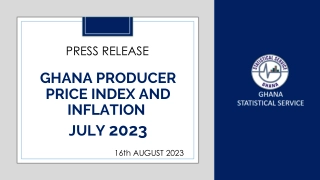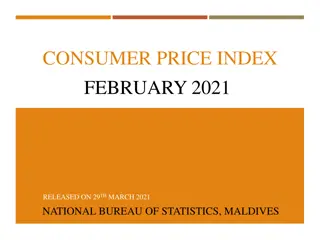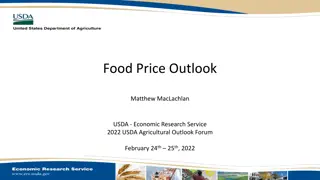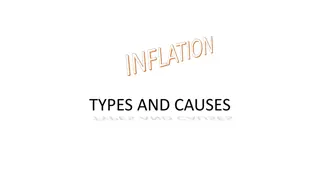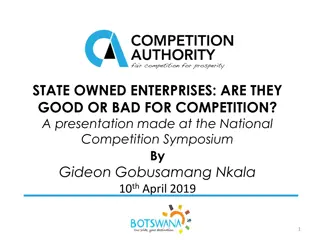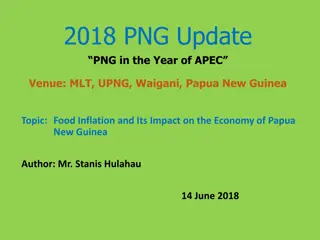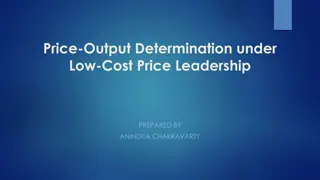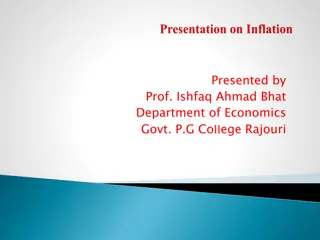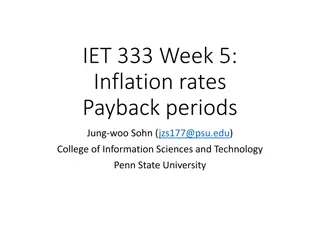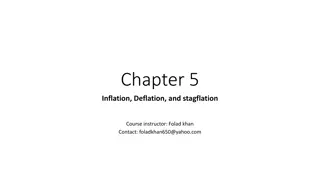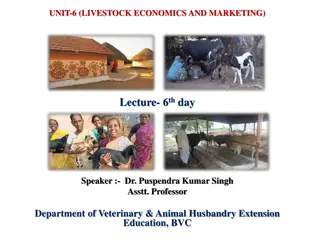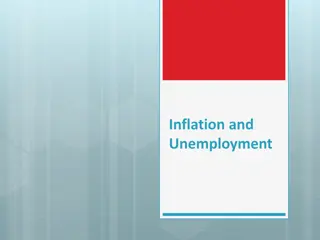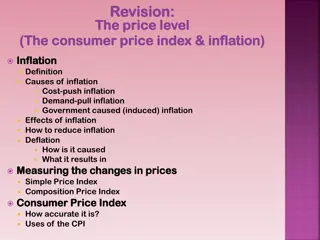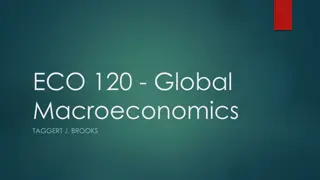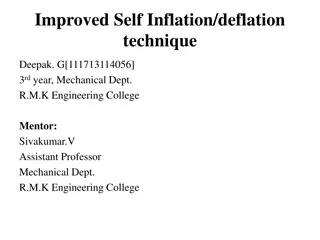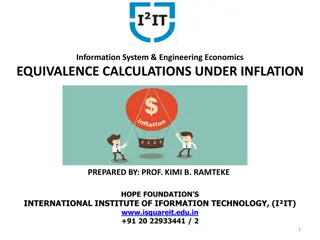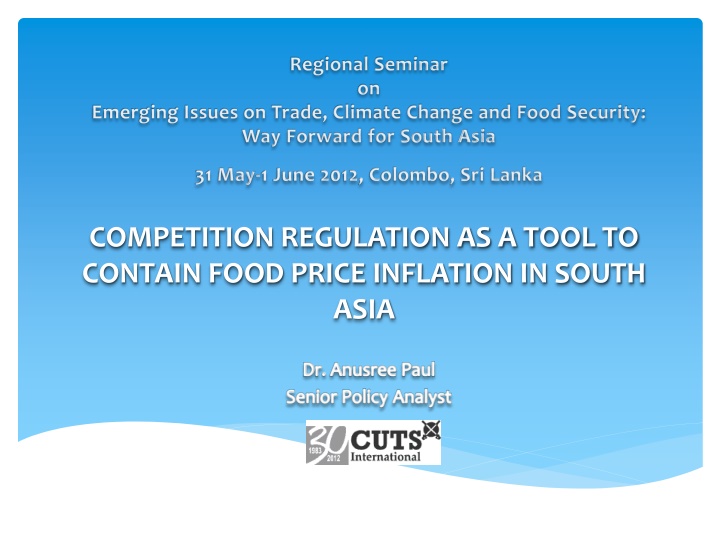
Competition Regulation for Containing Food Price Inflation in South Asia
"Explore how competition regulation can help address food price inflation issues in South Asia, focusing on major countries like Bangladesh, India, Nepal, Pakistan, and Sri Lanka. Learn about the impact of market structure, anti-competitive practices, and food commodity price spikes on the region's agro-food sector."
Download Presentation

Please find below an Image/Link to download the presentation.
The content on the website is provided AS IS for your information and personal use only. It may not be sold, licensed, or shared on other websites without obtaining consent from the author. If you encounter any issues during the download, it is possible that the publisher has removed the file from their server.
You are allowed to download the files provided on this website for personal or commercial use, subject to the condition that they are used lawfully. All files are the property of their respective owners.
The content on the website is provided AS IS for your information and personal use only. It may not be sold, licensed, or shared on other websites without obtaining consent from the author.
E N D
Presentation Transcript
Regional Seminar on Emerging Issues on Trade, Climate Change and Food Security: Way Forward for South Asia 31 May-1 June 2012, Colombo, Sri Lanka COMPETITION REGULATION AS A TOOL TO CONTAIN FOOD PRICE INFLATION IN SOUTH ASIA Dr. Anusree Paul Senior Policy Analyst
Contents Introduction Objective Literature Review Competition Characteristics of Agro-Food Sector Examples of Anti-competitive Practices Summary, Conclusion & Recommendations IPS, Colombo, Sri Lanka 2 5/31/2012
Introduction The South Asian countries are dominated by agro-based (food and food processing ) industries. Enormous significance for economic development. Food market structure is an important determinant of food prices. Distortions in terms of its competitiveness leads to a market failure and hence price instability. Competition Policy and Law a tool to alleviate market failure. IPS, Colombo, Sri Lanka 3 5/31/2012
Objective The aim of this paper is: To discuss the role of competition regulation in containing food price rise in South Asia. We have considered five major South Asian countries: Bangladesh, India, Nepal, Pakistan and Sri Lanka. To address the objective we need to concentrate on the following issues: Food market structure and conduct. Causes and consequences of food inflation. Competitive characteristics of agro-food sector in South Asia. IPS, Colombo, Sri Lanka 4 5/31/2012
World Market Scenario Food Commodity Price Spikes since 2004 350.0 300.0 250.0 200.0 150.0 100.0 50.0 0.0 2004 2005 2006 2007 2008 2009 2010 2011 Food Price Index Meat Price Index Dairy Price Index Cereals Price Index Oils Price Index Sugar Price Index Source: FAO Statistics IPS, Colombo, Sri Lanka 5 5/31/2012
The Trajectory of Food Inflation in South Asia Growth of Consumer Food Price Index in Major South Asian Countries 350 300 250 200 150 100 50 0 Oct-05 Oct-06 Oct-07 Oct-08 Oct-09 Oct-10 Oct-11 Jul-05 Jul-06 Jul-07 Jul-08 Jul-09 Jul-10 Jul-11 Apr-05 Apr-06 Apr-07 Apr-08 Apr-09 Apr-10 Apr-11 Jan-05 Jan-06 Jan-07 Jan-08 Jan-09 Jan-10 Jan-11 Growth Rates* (in %) 2000-2011 Bangladesh 7.0 India 6.0 Nepal 8.0 Pakistan 11.0 Sri Lanka 8.0 * Significant at 5 % level of significance. 2007-2011 8.3 10.5 13.3 15.4 10.0 Bangladesh India, agri wrkrs India, industrial wrkrs Nepal Pakisthan Srilanka Source: FAO Statistics. IPS, Colombo, Sri Lanka 6 5/31/2012
General Inflation and Food Inflation in Major South Asian Economies (y-o-y change in percent) 35 30 25 20 15 10 5 0 2004 2005 2006 2007 2008 2009 2005 2006 2007 2008 Sep-10 Sep-11 2004-05 2005-06 2006-07 2007-08 2008-09 2009-10 2010-11 2004-05 2005-06 2006-07 2007-08 2008-09 2009-10 2010-11 2006-07 2007-08 2008-09 2009-10 2010-11 Bangladesh India Nepal Pakistan Sri Lanka Food price inflation General inflation Source: Bangladesh Bureau of Statistics, Reserve Bank of India & Office of Economic Advisor, Nepal Rastra Bank, State Bank of Pakistan &Central Bank of Sri Lanka IPS, Colombo, Sri Lanka 7 5/31/2012
Literature Review Food Market Structure : o Coexistence of organised and unorganised structure. o Imperfectly competitive structure. o Traders/ intermediaries dominance, more market power. o Increasing integration influences competitiveness and market structure through linkages. IPS, Colombo, Sri Lanka 8 5/31/2012
Literature Review Food Price Inflation: o Causes of Food Price Inflation in South Asia Structural & Cyclical Demand and Supply Policy Failure o Consequences of Food Price Inflation Food insecurity has been intensified in South Asian region. Larger decrease in real income. Increase in poverty IPS, Colombo, Sri Lanka 9 5/31/2012
Competitive Characteristics in Agro-Food Sector Market distortions in the food market lead to anti-competitive Practices. Increase the price differential between farm gate and the retail level in South Asian countries. The typical market distortions include: o barriers to entry in domestic trading services, o barriers to intracountry commodity movements, o state intervention in the market , o inadequate marketing and transport infrastructure. South Asian countries suffer from all problems at different degree. IPS, Colombo, Sri Lanka 10 5/31/2012
Examples of Anti-competitive Practices (Collusion) Bangladesh : collusion of the middlemen or intermediaries of the sector Price differences between farm-gate and retail varies from 60 to 150 percent. Source: The Daily Star, 2 February 2012, Gloomy Winter for Farmers . Pakistan: Collusion among ghee and oil manufacturers and their association to fix their prices at a higher level. Source: Enquiry Reports, Competition Commission Pakistan. Available at: http://www.cc.gov.pk/images/Downloads/enquiry_report_ghee_cooking_oil.pdf IPS, Colombo, Sri Lanka 11 5/31/2012
Examples of Anti-competitive Practices (Cartelisation & Entry Barriers) India : Existence of cartels in onion trade across Maharashtra, Punjab and Haryana. The farm gate price of onion varies between Rs. 25-30 per kilo Retail prices are hovering over Rs. 70-80. Mark-up:Rs.5-6 for storage and transport. Source: KG Narendranath , Sandip Das : CCI to investigate onion cartel, Indian Express, New Delhi, Fri Jan 07 2011. Pakistan: Vertically integrated poultry industry made a cartel in all markets of day old chicks, poultry feed,broiler chicken, eggs and grandparent stock. Source: Enquiry Reports, Competition Commission Pakistan. Available at: http://www.cc.gov.pk/images/Downloads/poultry_14_july_2010.pdf) Bangladesh: Entry barrier by large conglomerates in Sugar Industry. Source: Ellis, Karen et al (2010): Assessing the Economic Impact of Competition, Overseas Development Institute, UK IPS, Colombo, Sri Lanka 12 5/31/2012
Summary, Conclusion & Recommendations Competition policy: affect structure and conduct of firms. Competition law: prevent anti-competitive business practices or market failure and unnecessary government intervention. Food sector: mostly unorganised, limited scope of competition regulation so far. Growing participation of private sector in food market chain. In the present structure, competition regulation can potentially play a vital role to check anti-competitive market behaviour and hence price distortions. IPS, Colombo, Sri Lanka 13 5/31/2012
Summary, Conclusion & Recommendations The food inflation issue in South Asia is a structural one. Need for structural transformation. watchful competition and regulation system under an effective competition law-policy framework. Necessary government intervention. Addressing food inflation requires a strong governance of the food production and policy system. IPS, Colombo, Sri Lanka 14 5/31/2012
asp@cuts.org IPS, Colombo, Sri Lanka 15 5/31/2012


